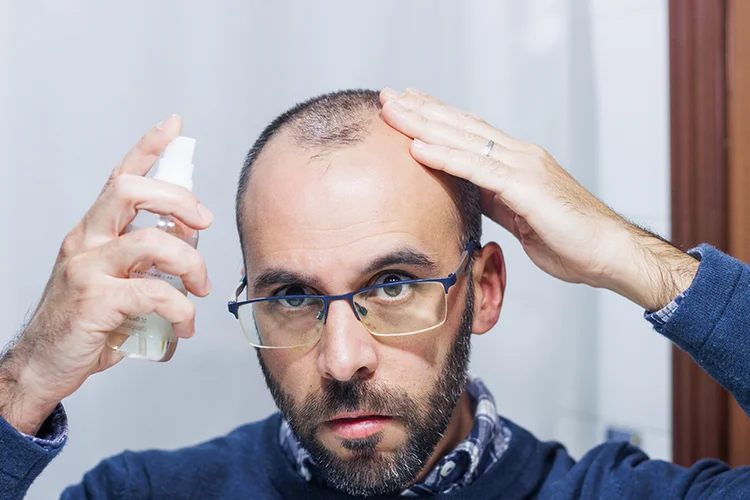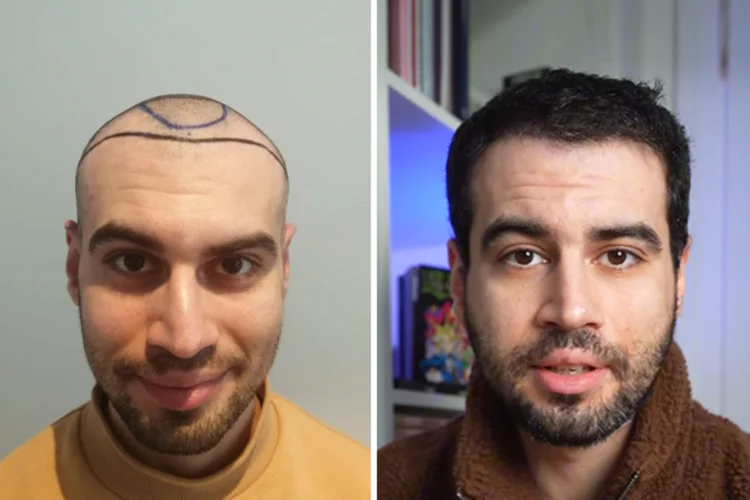
The Truth About Hair Growth Products – And Why Transplants Work
In many cultures, full hair is considered a symbol of youth, vitality, and attractiveness. It’s no wonder, then, that the desire to stop the onset of hair loss becomes an emotional challenge for many people.
Before considering a hair transplant, many sufferers undergo a veritable odyssey of shampoos, serums, pills, and alternative therapies. Their motivation: hope. But not every remedy delivers its promise – and the end result is often disappointment. In this article, we’ll be taking a look at the various solutions available, whether they really work, and when it’s time to call it quits.
- The Desperate Search for a Gentle Solution
- What Does Science Say About All These Miracle Cures?
- What Prevents People From Choosing a Hair Transplant?
- Emotional Costs: When Hope Turns into Frustration
- Hair Transplantation: The Turning Point For Real Hair Growth
- Conclusion: Real Results Require Realistic Decisions
- FAQs
The Desperate Search for a Gentle Solution
The first sign of hair loss hits many people unexpectedly. Whether on their pillow, in the shower, or in a photo, suddenly it becomes apparent that their hair is thinning. The first reaction? Google, shop, and hope.
Popular First Steps:
- Caffeine shampoos with “growth-promoting effects”
- Biotin supplements and vitamin combinations
- Hair growth sprays with essential oils or plant extracts
- Dietary supplements with zinc, selenium, iron & Co.
These products sound harmless—and that’s precisely what makes them attractive. They suggest that you can stop hair loss without medical intervention. But the reality is often different.
What Does Science Say About All These Miracle Cures?

While there are two active ingredients that have shown positive effects on hair growth in studies— minoxidil (in over-the-counter solutions) and finasteride (prescription)—even these don’t help everyone. Their effects:
- can only be temporary
- assumes possible side effects with finasteride
- only lasts as long as the products are used
All other products that advertise “hair growth” or “anti-hair loss” are usually based on empirical data or marketing promises – not on reliable long-term studies.
This doesn’t mean they’re completely ineffective. Some support the scalp, have a nourishing or anti-inflammatory effect—but they are no substitute for medical treatment for androgenetic alopecia (genetic hair loss) .
What Prevents People From Choosing a Hair Transplant?
Despite promising results, many patients hesitate to take the step of undergoing a hair transplant. The reasons are varied:
- Fear of pain or scars
- Uncertainty as to whether one is “ready”
- Big expense compared to shampoos and serums
- Hope that the situation will improve on its own
Added to this is the emotional component: Deciding to have a hair transplant means admitting to hair loss – which isn’t easy. Many people want to try everything else before committing to the procedure.
What many people don’t realise is that thanks to innovative methods like the Sleep Deep method, the treatment can now be performed virtually painlessly—with 0% noticeable stress during the harvest and implantation. Visible scars are also virtually eliminated with modern techniques.
Emotional Costs: When Hope Turns into Frustration

What’s often overlooked is that the many failed attempts aren’t just a final burden, they can be an emotional burden too. Every new attempt, every application, every product creates hope. And when that hope isn’t fulfilled, frustration grows.
Many report feeling lost, helpless, or perceiving themselves to be under the scrutiny of others – especially at work, when dating, or when looking in the mirror.
If you reach this phase, if you no longer feel comfortable in your own skin, you need more than just care – you need a permanent solution.
Hair Transplantation: The Turning Point For Real Hair Growth

While nourishing shampoos or vitamins have a supportive effect at best, transplantation is the only method today with proven long-term success for genetic hair loss – provided it is carried out professionally.
During a hair transplant, hair follicles are removed from the back of the head and implanted into bald or thinning areas. They continue to grow there, providing vibrant, natural results.
Tried and Trusted Methods:
- FUE (Follicular Unit Extraction): Gentle removal of individual hair follicles, barely visible traces
- DHI (Direct Hair Implantation): Direct implantation of the follicles without prior creation of channels – particularly precise in terms of growth direction and density.
Both procedures allow you to create a customised hairline tailored to your facial features, desired style, and the available donor area. Before and after results demonstrate impressive changes.
Conclusion: Real Results Require Realistic Decisions
It’s perfectly understandable that many affected people initially resort to gentle measures. Hope is important—especially if you don’t want to resort to surgery immediately. But hope shouldn’t become a years-long waiting game.
Renewed hair growth doesn’t come from creams or capsules. It comes from real, living hair follicles – transplanted by experienced hands.
A hair transplant isn’t an easy step, but it’s an honest path. One that not only restores hair, but also self-confidence. Learn everything you need to know in our expert guide to hair transplants in Turkey.
FAQs
How can I tell if my hair loss is genetic or caused by something else?
Most commonly, hair loss in men and women is due to androgenetic alopecia (genetic hair loss), which typically follows a recognisable pattern. However, other causes like stress, hormonal changes, illness, or nutritional deficiencies can also contribute. A consultation with a trichologist or dermatologist, or a free hair analysis, can help identify the root cause.
At what point should I stop trying hair growth products and consider a transplant?
If you’ve used clinically recommended treatments like minoxidil or finasteride consistently for 6–12 months without visible improvement, and your hair loss continues to progress, it might be time to explore permanent solutions like transplantation. An expert can assess whether you’re a suitable candidate.
Are there any non-surgical alternatives that actually work long-term?
Aside from minoxidil and finasteride, there are very few non-surgical options with proven long-term effectiveness for genetic hair loss. Some patients see benefit from PRP (Platelet-Rich Plasma) therapy, which can stimulate dormant follicles—but this is usually temporary and works best when combined with other treatments.
Can women also undergo hair transplants?
Yes, hair transplants are not exclusive to men. Women with thinning hair or defined bald patches, especially those with stable donor areas, can be excellent candidates. The approach is typically more individualised due to differing hair loss patterns.
How long does it take to see results after a hair transplant?
Initial shedding is normal, and visible growth typically starts around the third to fourth month. Most patients see significant improvement after 6 to 9 months, with full results visible by 12 to 15 months.
Is a hair transplant permanent?
Yes, in most cases. The transplanted hair comes from the back of the head, where follicles are genetically resistant to hair loss. Once implanted, they usually continue to grow for a lifetime—assuming the procedure was done correctly and the donor area is healthy.
Does the procedure require ongoing maintenance or medication?
While the transplanted hairs are permanent, patients with ongoing genetic hair loss are often advised to continue using minoxidil or finasteride to preserve existing native hair and avoid further thinning in untreated areas.
What risks or side effects should I be aware of with a hair transplant?
Hair transplants are generally low-risk, especially with modern techniques. Temporary side effects can include swelling, redness, scabbing, or numbness. Rare risks include infection or poor graft survival—but these are typically avoidable in reputable clinics with proper aftercare.
How much does a hair transplant cost—and why is it so varied?
Costs can range from £2,000 to over £10,000, depending on the number of grafts, the clinic’s expertise, and the country where it’s performed. While it may seem expensive upfront, it’s a one-time cost compared to ongoing spending on ineffective products.
What should I look for when choosing a hair transplant clinic?
Look for certified surgeons with experience in FUE and DHI, transparent before-and-after results, verified patient reviews, and clear pricing. Avoid clinics with pushy sales tactics or unrealistic promises.


